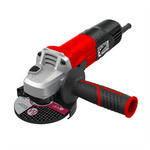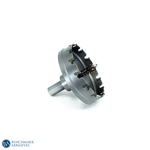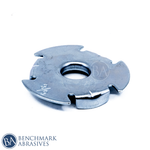
When Should You Change Sandpaper Belts?

The best abrasive products have a long life when applied properly. But eventually, you'll want to swap them out. How do you tell when to replace sandpaper belts, discs, and sheets? In this post, we offer some advice on how to tell when a product needs to be replaced.
Red Flags That Your Sandpaper Needs To Be Replaced
When your product performs poorly, figure out why. It's likely that the grains are clogged with debris or the abrasive side has worn down. This is if the abrasives take an excessively long time to work or you need to apply additional pressure to achieve results. In either scenario, you should change your sandpaper.
In addition:
- You should replace the sandpaper when you see that some areas are more worn out than others. Too rough sandpaper can scratch surfaces and keep you from getting the desired results.
- Occasionally old sandpaper leaves a smooth surface, making visual confirmation challenging. Try touching the surface; if it feels too smooth, it must be replaced.
- Replace the sandpaper if performance and output are still inadequate after cleaning it (more about that below).
Can Abrasive Products Be Reused?
If it has been a while since you have used abrasives, you could be tempted to either throw away your sandpaper as soon as you start to notice early symptoms of wear and tear or to use it until the abrasive side is nearly completely worn out. A third method is available to you, albeit how you go about it will largely rely on the kind of abrasive product you have.
How Are Sandpaper Products Cleaned?
Before tossing away your sanding belt or disc, try cleaning it if it appears blocked but is otherwise in pristine condition. If the backing is not paper, try soaking it for a few hours. Once it has soaked through, use a steel brush to scrub away any residue. Let the sandpaper air dry after washing it before using it again. Try cleaning it by rubbing a rubber pad along the grain to remove debris. This is if your abrasive product has a paper backing or the clogging is only mild. Cleaning sanding belts involves:
- Use a cleaning stick with abrasives. If you don't have access to one, you can use an old leather shoe. As the sand belt passes through, press a stick or shoe against it to remove any blockages before turning on the belt sander. You can substitute cork if your belt is narrower.
- the use of a liquid cleanser to get rid of paint, wood, or resin buildup (not so effective on metal).
Using An Extended Sanding Disc
If you've been using an orbital sander, especially if you've been operating it for a while, you might have noticed that the abrasive pad is wearing down. Instead of discarding the sandpaper disc, mount it on a piece of wood and utilize it for manual hand sanding. The actions you should take are as follows:
- Clear the used sandpaper of dirt.
- Put the sanding disc on thin wood, such as MDF or softwood.
- Draw a mark on the wood in the shape of sandpaper.
- Cut off the wood using the sandpaper disc shape as a guide. Connect the wood to the sandpaper disc.
- To make a handle, glue a small MDF block to the back of the wooden sheet.
How Long Does Sandpaper Last?
It can be difficult to predict how long your sandpaper will last. What you use it for and how often you use it depend on each other. For instance, an excellent product will last you months if you sand by hand or apply abrasives for polishing or touch-ups. The sanding disc, however, loses sharpness faster if you operate an orbital sander or belt sander. This is because of the machine's higher speed and spinning force.
Can Sandpaper Be Recycled?
Along with bottles, cans, and paper, sandpaper is made of a variety of non-degradable materials, therefore it cannot be recycled. If you're hesitant to discard used or old sandpaper, consider using it again in the following situations:
- sharpening knives or scissors.
- Scratching the shoes' soles to improve traction on soft ground.
- Using it to cover indoor steps will prevent slippage.
You could also try cutting off rectangular pieces and adhering them to the back of your business cards. This is if you own a company where sanding is a key procedure.
Conclusion
It's only natural to want high-end abrasives like zirconia or EdgeCore ceramic to last as long as possible once you've invested your hard-earned money in them. But eventually, it will stop working, and you'll either need to replace it or risk lowering the quality of your work.



































































